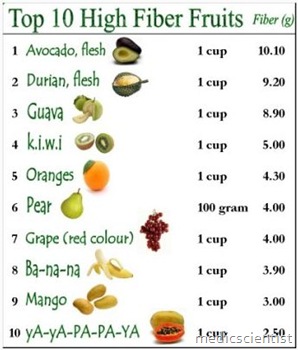Article Contents ::
- 1 CONSTIPATION Causes Risk Factors and Constipation Treatment Management
- 2 CONSTIPATION
- 3 Constipation Causes
- 4 Constipation Risk Factors
- 5 Constipation Etiology
- 6 Constipation Epidemiology
- 7 Constipation Associated Conditions
- 8 Constipation Treatment
- 9 Osmotic laxatives:
- 10 List of all Main laxatives for treatment of constipation —
CONSTIPATION Causes Risk Factors and Constipation Treatment Management
CONSTIPATION
- Constipation is a decrease in frequency of passage of stools to less than 3 per week, passage of hard stools, with straining, abdominal fullness and a sense of incomplete evacuation.
- hard stools, excessive straining, prolonged time spent on the toilet, a sense of incomplete evacuation, and abdominal discomfort/bloating.
- A group of syndromes with similar findings that include unsatisfactory defecation characterized by infrequent stools, difficult stool passage, or both. Characteristics include fewer than 3 bowel movements a week
Constipation Causes
- · Colonic obstruction – neoplasm, stricture
- · Medications
- · Anal fissures
- · Irritable bowel syndrome
- · Rectal prolapse
- · Hypothyroidism
- · Pregnancy
- · Depression
- · Parkinsonism.
Constipation Risk Factors
- Extremes of life (very young and very old)
- Polypharmacy
- Sedentary lifestyle or condition
- Improper diet and inadequate fluid intake
Constipation Etiology
- Constipation may be conceptually regarded as disordered movement of stool through the colon or anorectum since, with few exceptions, transit through the proximal gastrointestinal tract is often normal
- Primary constipation:
- Slow colonic transit time (13%)
- Pelvic floor/anal sphincter dysfunction (25%)
- Functional—normal transit time and sphincter function, yet problems (bloating, abdominal discomfort, perceived difficulty going, presence of hard stools) (69%)
- Secondary constipation:
- Diseases associated with constipation include neurologic and metabolic disorders, obstructing lesions of the gastrointestinal tract, including colorectal cancer, and endocrine disorders such as diabetes mellitus
- Irritable bowel syndrome (IBS)
- Endocrine dysfunction (diabetes mellitus, hypothyroid)
- Metabolic disorder (increased calcium, decreased potassium)
- Colonic and anorectal motor functions are coordinated by enteric, sympathetic, and parasympathetic nerves.
- Mechanical (obstruction, rectocele)
- Pregnancy
- Neurologic disorders (Hirshsprung, multiple sclerosis, spinal cord injuries)
- Severe idiopathic chronic constipation —
- Patients may complain of infrequent defecation, excessive straining when defecating, or both; these symptoms often fail to improve with fiber supplements or mild laxatives.
- Severe idiopathic chronic constipation in adults is predominantly a disease of women
Constipation Epidemiology
- Prevalence rates have been lower in studies using Rome II criteria to define constipation compared with studies based upon self-reporting.
- A systematic review estimated that 63 million people in North America fulfilled the Rome II criteria for constipation
- Predominant age: May affect all ages, but more pronounced in children and elderly
- Predominant sex: Female > Male 2:1
- Non-whites > whites
- The prevalence of chronic constipation rises with age, most dramatically in patients 65 years of age or older
Constipation Associated Conditions
- Debility, either general as in the aged or that imposed by specific underlying illness
- Dehydration
- Hypothyroidism
- Hypokalemia
- Hypercalcemia
Constipation Treatment
- Counselling Laxatives Colectomy
- Biofeedback techniques Yoga. Management of dyssynergic defecation involves biofeedback, relaxation exercises, and suppository programs.
- Management of chronic constipation due to slow transit includes patient education, behavior modification, dietary changes, and drug therapy.
- Bulking agents (need to be accompanied by adequate amounts of liquid to be useful)
- dose response between fiber intake, water intake, and fecal output,The recommended amount of dietary fiber is 20 to 35 g/day.
Osmotic laxatives:
- Polyethylene glycol (MiraLax) (0.8 mg/kg/d) 17 g daily
- Saccharines Lactulose (Chronulac) 15–60 ml q.h.s. (flatulence, bloating, cramping side effects)
- Sorbitol 15–60 ml q.h.s. (as effective as lactulose)
- Magnesium salts (Milk of Magnesia) avoid in renal insufficiency
List of all Main laxatives for treatment of constipation —
| Laxative | Usual adult dose | Onset of action | Side effects |
| Bulk-forming laxatives | |||
| Psyllium | Up to 1 tablespoon 3 times/day | 12 to 72 h | Impaction above strictures, fluid overload, gas and bloating |
| Methylcellulose | Up to 1 tablespoon 3 times/day | 12 to 72 h | Impaction above strictures, fluid overload, gas and bloating |
| Calcium polycarbophil | 2 to 4 tabs/day | 24 to 48 h | Impaction above strictures, fluid overload, gas and bloating |
| Wheat dextrin | 1 to 6 caplets daily (3 to 18 g fiber) | 24 to 48 h | Impaction above strictures, fluid overload, gas and bloating |
| Emollients (softeners) | |||
| Docusate sodium | 100 mg 2 times/day | 24 to 72 h | Skin rash |
| Osmolar agents | |||
| Polyethylene glycol | 8.5-34 g in 240 mL liquids | 2 to 4 days | Nausea, bloating, cramping |
| Lactulose | 15 to 30 mL every other day, or 2 times/day | 24 to 48 h | Abdominal bloating, flatulence |
| Sorbitol | 120 mL of 25 percent solution 1 time/day | 24 to 48 h | Abdominal bloating, flatulence |
| Glycerine | 3 g suppository 1 time/day | 15 to 60 min | Rectal irritation |
| Magnesium sulfate | 15 g 1 time/day | 0.5 to 3 h | Magnesium toxicity (with renal insufficiency) |
| Magnesium citrate | 200 mL 1 time/day | 0.5 to 3 h | |
| Stimulant laxatives | |||
| Bisacodyl | 10-30 mg po 1 time/day | 6 to 10 h | Gastric irritation |
| 10 mg suppository 1 time/day | 15 to 60 min | ||
| Senna | 2 to 4 tabs 1 time/day | 6 to 12 h | Melanosis coli |
| New agents | |||
| Lubiprostone | 24 micrograms 2 times/day | 1 to 2 days | Nausea, diarrhea |



